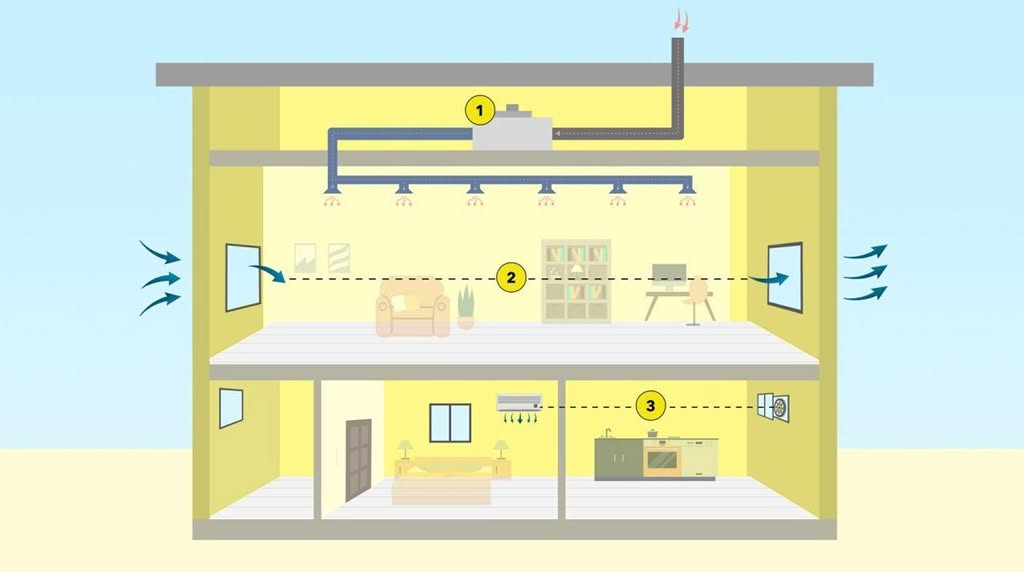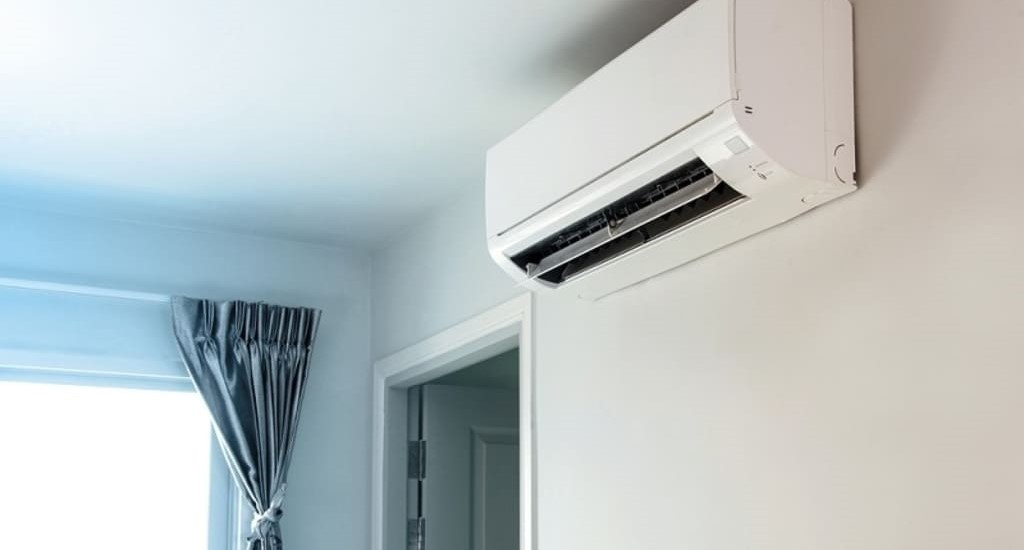In the world of creating comfortable indoor environments, questions often arise about the functions of different systems. Two terms that are frequently confused or used interchangeably are “ventilation” and “air conditioning.” In reality, they are fundamentally different processes, although in modern comprehensive systems, they often work together. Understanding their distinctions is the first step towards correctly choosing and operating your climate control equipment.
In the field of building engineering systems, the universally accepted term is HVAC (Heating, Ventilation, Air Conditioning). This acronym itself hints that ventilation and air conditioning are separate, though interconnected, components of an overall air treatment system.
So, what is the essence of each of these processes?
What is Ventilation?
The primary and foremost task of ventilation is to ensure air exchange. This means the supply of fresh air into a space and the removal of stale, used air from it.

Why is this necessary? During human activity, equipment operation, and simply within the existence of a building, the air accumulates carbon dioxide (CO2), various odors, harmful volatile organic compounds, and excess moisture. Insufficient air exchange leads to “stale” air, impaired well-being, decreased concentration, headaches, and the risk of mold growth.
Thus, a ventilation system is directly responsible for the quality of air (Indoor Air Quality – IAQ) within a room. It removes contaminated air and replaces it with cleaner outdoor air.
Ventilation systems can be:
- Natural Ventilation: Based on differences in pressure and temperature (for example, through open windows, vents, or ventilation shafts).
- Mechanical Ventilation: Uses fans to move air. This includes Supply Ventilation (bringing fresh air in), Exhaust Ventilation (removing stale air), or Balanced Ventilation (simultaneous supply and removal of a balanced volume of air, often with Heat Recovery – transferring energy from exhaust air to incoming fresh air to save on heating costs in cold periods).
What is Air Conditioning?
The task of air conditioning (Air Conditioning) is entirely different. Its main goal is air treatment to achieve and maintain specific air temperature (Temperature) and air humidity (Humidity) parameters.

When we say “turn on the air conditioner,” we usually mean cooling the air (Cooling) during hot weather. This is indeed the primary function of most residential and commercial air conditioning systems (such as Split Systems, multi-split, VRV/VRF systems, chillers, and fan coils). An air conditioner removes heat from the indoor air and transfers it outside, making the air inside cooler.
However, an air conditioning system (Air Conditioning System) can also:
- Heat the air (Heat Pump mode in many modern air conditioners).
- Dehumidify the air (Dehumidification) (reduce excess moisture).
- Partially clean the air by passing it through filters (but this is not their primary function and does not replace proper filtration found in dedicated ventilation or air purification systems, especially for fine particles).
The Key Difference:
Let’s now formulate the main distinction:
- Ventilation = Air Renewal (Air Exchange). It changes the composition of the air indoors, ensuring the supply of fresh air and removal of stale air. Its goal is health and well-being through high Indoor Air Quality (IAQ).
- Air Conditioning = Air Property Modification (Air Treatment). It changes the temperature and humidity of the air already existing in the space, without introducing a significant volume of fresh air (unless it’s an integrated air conditioning and ventilation system that includes a dedicated fresh air intake section). Its goal is thermal comfort.
Think of an analogy: Ventilation is like opening a window to let fresh air in and old air out. Air conditioning is like using an air conditioner to make the temperature inside the room more comfortable, working with the air that’s already there.
Why is it Important to Understand the Difference?
Often, people install a powerful air conditioner expecting it to solve all their air-related problems. An air conditioner will effectively cool the room, but if there is no proper ventilation (for example, all windows are closed, and a separate ventilation system is absent or not operating), the air will remain “heavy,” saturated with CO2, odors, etc. You will feel a comfortable temperature, but the air quality will be low, which will negatively impact your well-being.
This is precisely why, to create a truly comfortable, healthy, and energy-efficient Indoor Climate (Indoor Climate), it’s essential to consider both systems – ventilation and air conditioning – as parts of a unified whole within an HVAC system. A comprehensive approach that accounts for the need for both cooling (or heating) and the supply of fresh air, as well as humidity control and filtration, allows for optimal conditions.
In Conclusion:
Ventilation and air conditioning are not the same. Ventilation ensures air exchange and focuses on air quality by removing pollutants and supplying fresh air. Air conditioning manages air temperature and air humidity, creating a comfortable thermal environment. Both functions are critically important for a modern building and are components of comprehensive HVAC systems, whose goal is to create an ideal indoor climate through air treatment.
Understanding their differences allows for more informed decisions when selecting, designing, and operating climate control equipment for your comfort, health, and well-being.
If you require professional services for repair, maintenance, or installation of HVAC systems in San Diego and the surrounding areas, contact Omega Tech Service. Our specialists have extensive knowledge and experience working with all types of climate control equipment, ensuring the reliable and efficient operation of your ventilation and air conditioning systems. Contact us for a consultation or service call.
Did you like this article and find it helpful? Share the link with your friends!
- Published on





